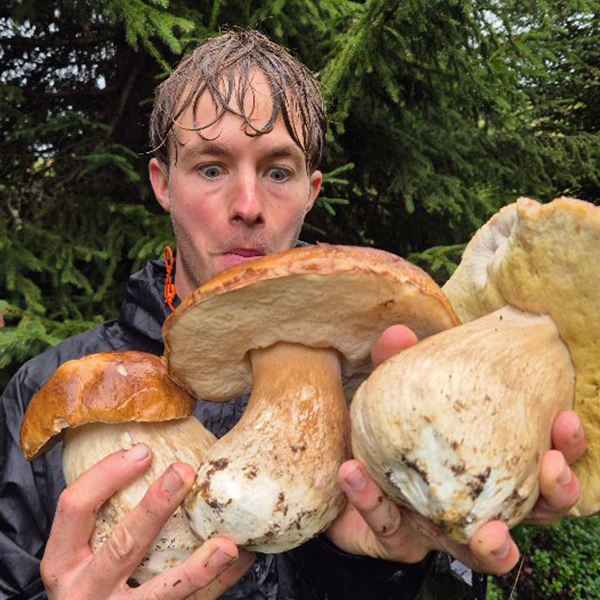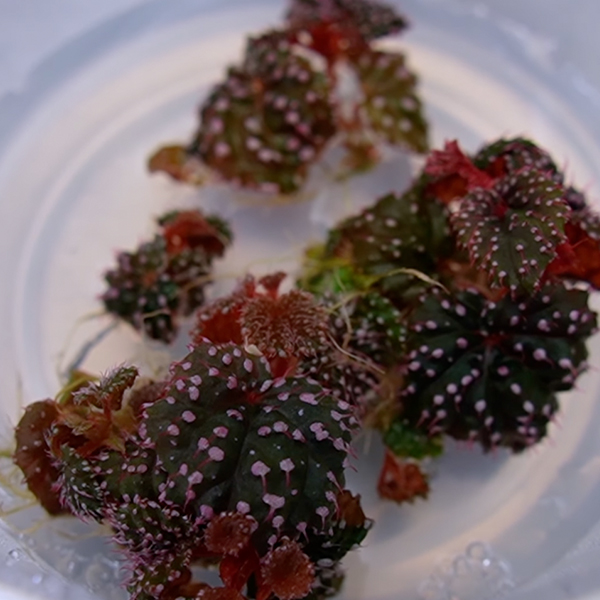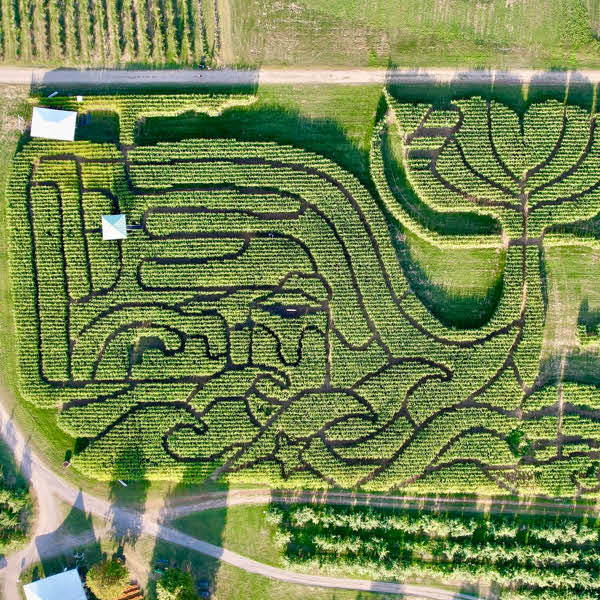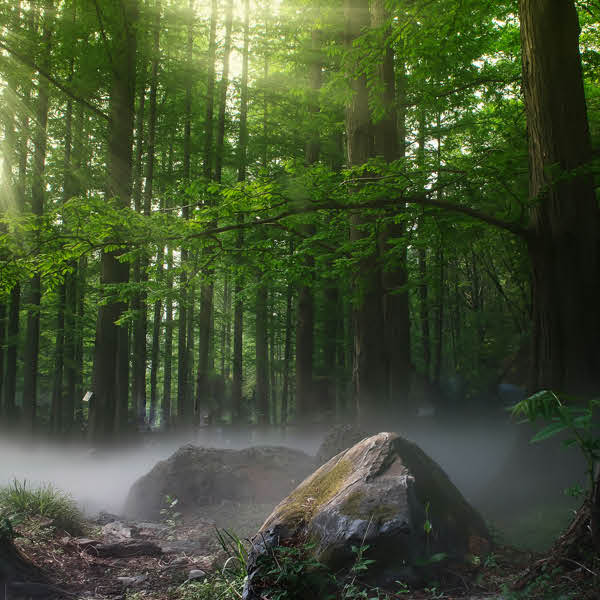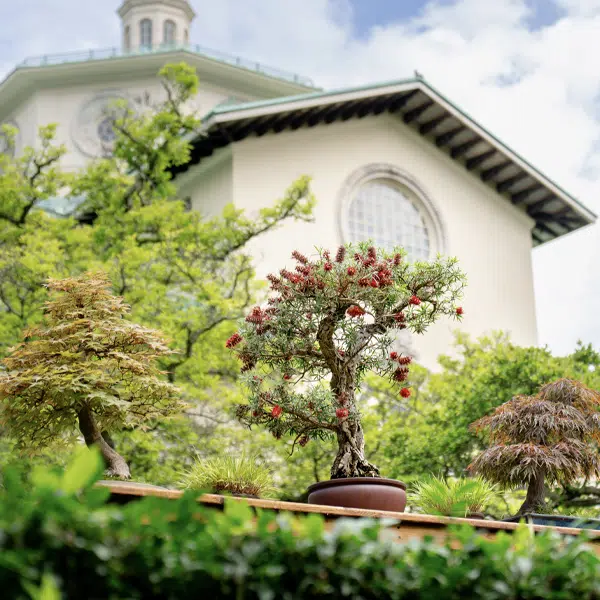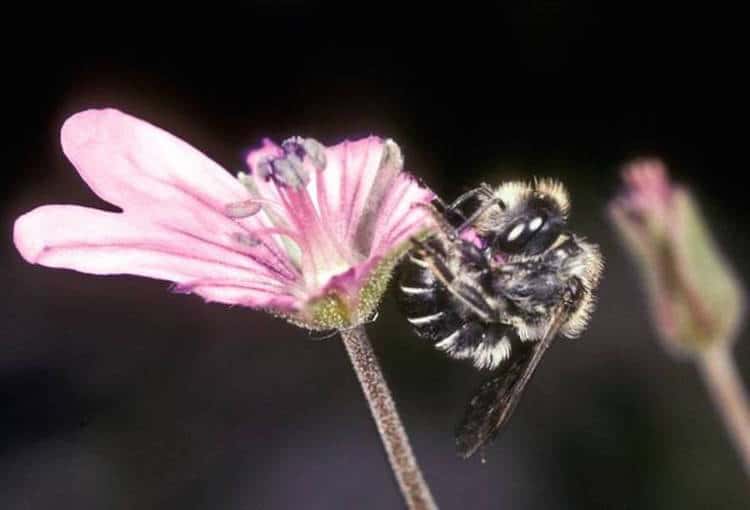
With the news of a global decline in bee populations, many people are working to help save the precious pollinators from extinction. But it’s not just humans that are making an effort—one particular type of bee has its own special way of protecting its rare species. Known as Osmia avosetta, these typically solitary bees can’t rely on the support of other worker bees to safeguard their young. Instead, the female insects have taken it upon themselves to craft colorful bees nests from flower petals.
With nest sites discovered in both Antalya, Turkey and Sepidan, Iran, the Curator of Invertebrate Zoology at the American Museum of Natural History (AMNH) Dr. Jerome Rozen conducted extensive research on the phenomenon. He describes the colorful cocoons: “[The] cells are unusual in that they are lined by two layers of colorful flower petals that sandwich a thin middle layer of mud.” He reveals “It’s not common for bees to use parts of plants for nests…there’s a demand for biologists to know bees nowadays…they are the foremost animal pollinators of plants, and tremendously important for maintaining ecosystems—not only crops but also for conservation.”
Both practical and beautiful, the mother bee first sources the perfect petals and brings them back to her nest site. She then digs a 1.5 cm-deep burrow and lays down multiple layers of overlapping petals and mud. After filling the nest with nutritious pollen and nectar, she then lays her precious egg on top. Finally, she seals the cell by folding the scale-like petals inwards and plugging the hole with mud. While the exterior drys like a hard shell, the interior stays humid, allowing a cozy environment for the larvae to grow and mature as they wait out the winter. The process is proof that no matter the species, a mother’s love is unconditional!
You can read Rozen’s full report here.
In order to protect their young, a rare bee species known as Osmia avosetta craft nests for their offspring using flower petals.
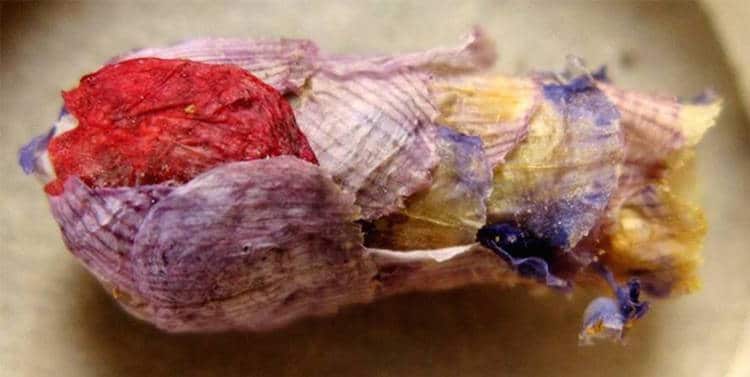
The colorful cocoons are made from multiple layers of petals and mud.
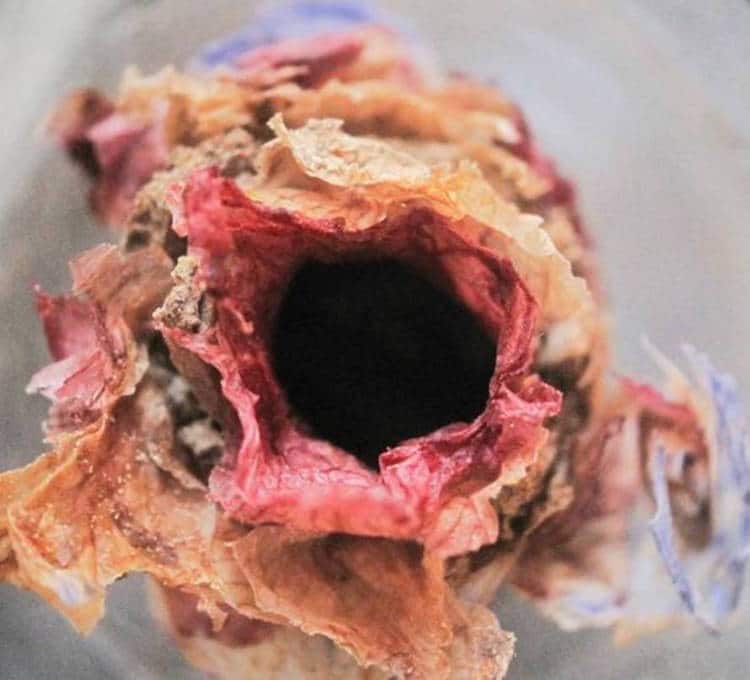
The mother bee then fills the nest with nutritious pollen and nectar before laying her precious egg on top.
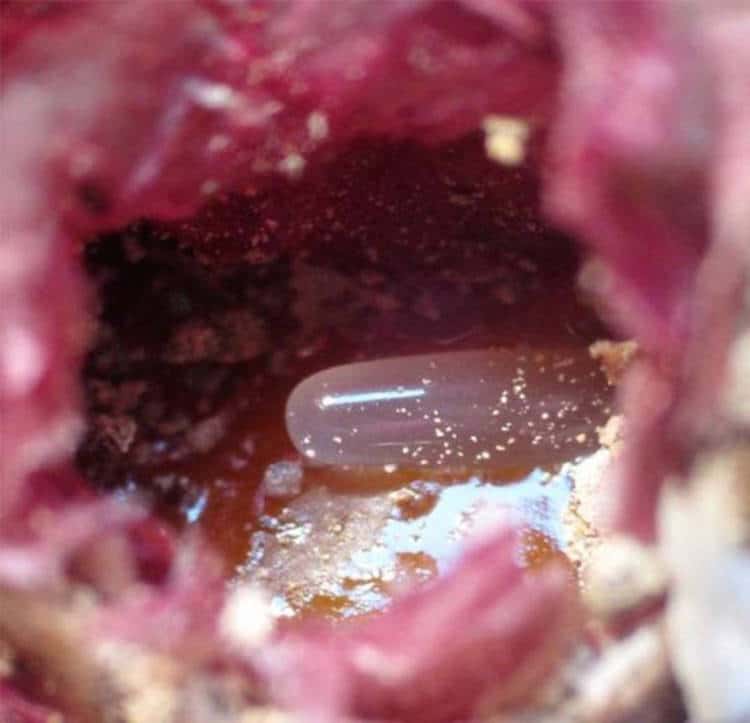
Finally, she seals the cell by folding the scale-like petals inwards and plugging the hole with mud.
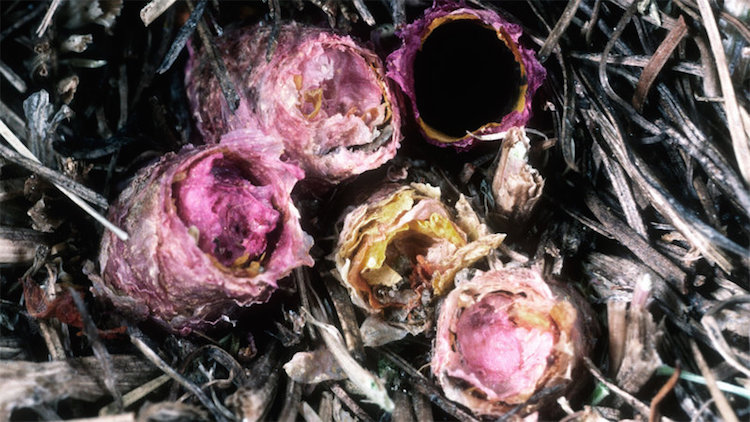
Dr. Jerome G Rozen / American Museum of Natural History (AMNH): Website
My Modern Met granted permission to use photos by Dr. Jerome G Rozen.
Related Articles:
Cheerios is Giving Away 100 Million Wildflower Seeds to Help Save the Bees
Macro Photos of Bees Showcase Stunning Natural Detail
Designers Create Real Observation Beehive You Can Mount on Your Wall at Home
Stingless Bees Are Creating Beautiful Spiraling Hives in Australia











































































